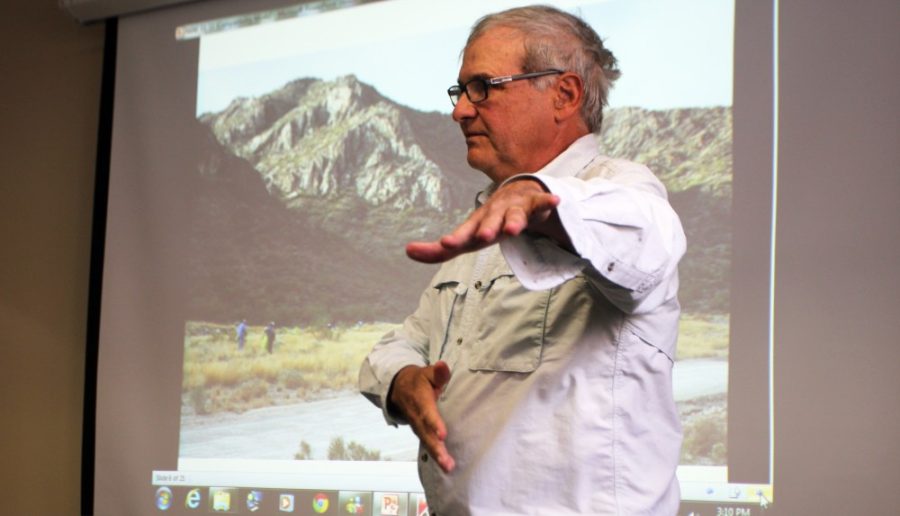For members of the UA’s oldest environmental club, getting their hands dirty is just part of the program.
The UA’s Soil, Water and Environmental Science Club, also known as the SWES Club, is the oldest environmental science club on campus which, according to James Riley Soil, Water and Environmental science associate professor and adviser, started in the early 1970s. It is a student-run organization that aims to educate the UA community about sustainability and conducts activities throughout the school year to get members outdoors and surveying the land.
“You really get to go out into the environment and see what is going on around you ecologically,” said club president Noelle Espinosa, an environmental science senior. “We want to give students the chance to learn about their environment in the desert and why it is important to maintain nature.”
This semester, the club’s projects have included preparing for a soil judging competition where participants dig deep trenches to observe the layers and characteristics found in the dirt. Members of the club have also helped with an assessment in finding animal life at the San Xavier Mine where they proposed some of the mineshafts be filled up. In October, the club was able to determine there were dwellings in the proposed areas.
“It was awesome, I got to repel down an abandoned mineshaft,” said vice president Daniel Basubas, an environmental science junior who said during the experience he discovered evidence of bats, rats and snakes using the area. “Before I joined the club I thought all we were going to do was dig holes and be bored, but that is definitely not the case.”
This month, the club will be focusing its efforts on mapping out a restoration project for a private mine called the Waterman Mountains site near the Silver Bell Mines. For the project, the club wants to incorporate plants that went missing in the area due to the mining practices, including native trees and saguaros.
“The land has been really scarred and damaged due to mostly one man’s mining project, so we are hoping to re-vegetate it and get some water flow in there because there is a lot of soil erosion,” Espinosa said. “If you believe in this kind of stuff, like preserving the natural wildlife, it is important for that alone.”
In its meeting on Friday, the club had John Sheuring, volunteer manager of the project from the Arizona Bureau of Land Management and member of the Arizona Native Plant Society, speak about the progress of the area and what he thought the club might want to include in the restoration. According to Sheuring, it would take decades for native plants to grow back in the area without the restoration project. On top of adding plants, they will remove buffelgrass, a non-native plant in Arizona that often competes with other plants in receiving water.
“It’s a very beautiful landscape and if something is not done that scar is going to stay there forever,” Sheuring said. “We’re also approaching this as a proof of concept, to show that we can do it and make an example about what we are capable of.”









